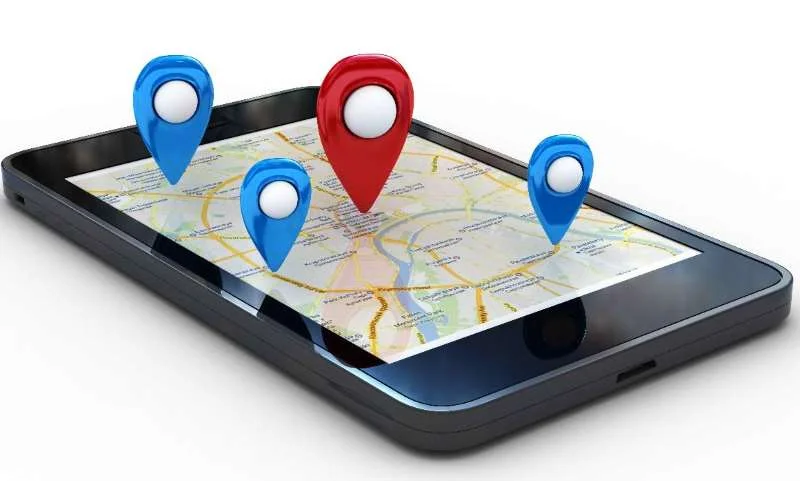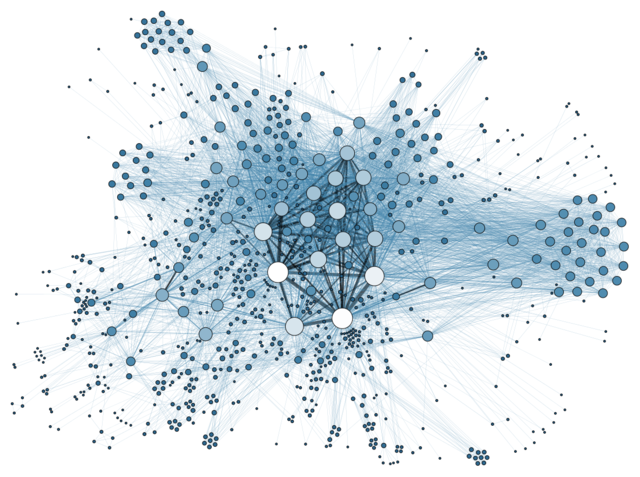The framework of the cities we live and work in is changing. What will this mean for the arts?
Getting Started on Location-based Social Marketing for your Organization
Research Update: Navigating Digital Analytics for Social Marketing
How To Measure the Effectiveness of an Online Silent Auction System
Social Listening: Real World Applications
White Paper Wednesday: Using Spatial Data
Museum Data and What To Do With It – Children’s Museum of Pittsburgh Part Two
As a part of the “Museum Data and What to Do with It” series, AMT Lab contributor Kate Lin takes a look at the Children’s Museum of Pittsburgh’s journey of adapting to technology trends, and how Big Data is changing the museum’s operations. This post focuses on the visitor experience and development at the Children’s Museum of Pittsburgh. More on how data influences the Museum's marketing efforts can be found here.
Unique Audience Structure and Visitor Experience For Children’s Museums
George Brzezinski, the Director of Visitor Services at the Children’s Museum of Pittsburgh, oversees all aspects of visitor services at the museum from admission, cafes, to rental events. Brzezinski brought his previous experience in the sports management field into the non-profit world 12 years ago. When asked about the most significant difference is in terms of visitor service at the Children’s Museum compared to other organizations, Brzezinski said, “the age of our visitors, obviously.”
Many visitors at the Children’s Museum of Pittsburgh are below the age of ten, which makes customer service especially important. To serve its audience’s needs, the museum is constantly working on enhancing visitor experience by finding ways to speed up the admission process. “When the most common visitors are young parents with small children, there’s not much room for patience at the admission desk. Data and technology changed every part of our operations, especially in terms of admissions and membership,” said Brzezinski.
Qualitative data collected through surveys and social media channels is informative in providing the museum with customer feedback. Parking fee collection is one great example of how the museum responded to customer feedback using technology. Instead of having people pay the parking fees at the admissions desk, visitors can now pay at the machines in the parking lot. This seemingly modest change has made the admissions process much quicker and more convenient for the museum members. Now members can pass through the desk quickly and start enjoying the museum without taking out their wallet and waiting for the payment to be processed. There’s also an app for people to download that remembers their car’s license plate number and credit card information, making the payment process as simple as hitting a button on their device on each visit.
Efforts and Challenges in Data Collection at the Children’s Museum of Pittsburgh
The unique composition of its audience also makes collecting data at the admissions desk a difficult task. As of now, the museum only collects zip codes from their patrons, unless they make a purchase at the museum. The target audience of the children’s museum are families with children. This audience group values efficiency and convenience more than others. If patrons purchase a membership, other data such as name, age, address and phone number can be collected. For regular visitors or non-members, it is almost impossible for the children’s museum to collect more data without sacrificing the quality of visitor experience.
However, the Children’s Museum of Pittsburgh has a department of learning and research that conducts audience surveys separately from the admissions process, attempting to make up for the information that is hard to collect at the front desk. The department utilizes special events such as birthday parties, reunions, and field trips, to gather feedback and shape profiles for different audience segments based on the results.
Data Integration: From Point-of-Sale E-Commerce Data to CRM Database
The implementation of Siriusware, an on-site ticketing and point-of-sale software, has significantly improved the data integration at the Children’s Museum of Pittsburgh. Siriusware delivers essential features required at every point-of-sale from online shopping, e-gift cards to admissions. Prior to Siriusware, the Children’s Museum of Pittsburgh had TicketMaster Vista, which did not automatically integrate e-commerce data with the museum database. Whenever a customer bought a membership online, the museum staff would have to manually enter the data into their database. With Siriusware, all point-of-sale data is integrated in real-time. An additional add-on connects Siriursware to Raisers’ Edge, the primary donor database at Children’s Museum, and allows the membership data to flow into the donor database and vice versa.
However, there are still some limitations of the current system to fit all the needs for Children’s Museum of Pittsburgh. Unlike some museums that outsource their café operations to a third-party provider, the Children’s Museum runs its own café service – the Big Red Room Café. Compared to other software packages that are designed for the food industries, Siriusware currently has limited functionality when it comes to managing food inventory.
Data Provides Insights for Development at Children’s Museum of Pittsburgh
Gina Evans, the Director of Development, oversees the museum’s development efforts to raise two million dollars to support their annual operational budget, plus another one million to support other special projects and campaigns. Evans leads a four-person team, covering areas including corporate giving, individual giving, grant writing and special events.
Donor data is stored in the Raiser’s Edge database. The team tracks and analyzes the data to support the museum’s fundraising efforts. The team pays attention to trends over time, looking at the type of giving and how people give from year to year. Raiser’s Edge helps the development team tremendously for its ability to target each specific donor group differently based on the reports that it generates.
Examining data from Siriusware and MailChimp also provides the museum additional insights to detect potential future donors. It allows the museum to track people who make donations online or at the front desk and members’ activities in the museum. Mailchimp makes it easier to track the changes of the open rates and for the museum to test the effectiveness of different targeting strategies to those potential donors.
Mobile Bidding App Streamlined Fundraising Events
The Children’s Museum of Pittsburgh was one of the first cultural organizations to use GiveSmart, a mobile bidding app for its fundraising events. The app handles the guest registration and helps with the auction and bidding process. The customers can register on site or pre-register online in advance. It is a high functional tool to collect visitor data and streamline the event process by providing real-time data reports such as which items are more attractive to the audience or which ones are neglected. The real-time reports allow the museum to take immediate actions to further promote those neglected items on-site. The data collected by the app also provides the development team with valuable insights into the audience’s preferences and bidding habits when planning for future events.
It took the museum more time to set up the mobile app, it has made it much easier to manage the auction data and financials for the fundraising events. Other Pittsburgh non-profit organizations, such as Society of Contemporary Craft, have just begun to use this app after consulting with the Children’s Museum of Pittsburgh.
Challenges to Utilize Data For Development Efforts At the Children’s Museum
Budget is always a concern in terms of acquiring other technologies or talents in helping the museum to interpret data. Aside from looking into possibilities to purchase more advanced software packages, the staff is continuously looking into maximizing the functionalities of their current resources. The development team is also looking to take more advantage of the crystal reports function, a reporting tool within Raiser’s Edge database that takes the reporting to a much more detailed level.
According to Evans, the average members of the Children’s Museum remain for about four years and leave when their children are about eight years old, moving on to other organizations such as the Science Centers or the zoo. Those members might return to the museum when they have new children or even grandchildren. One of the things that the museum is trying to achieve is to establish the donor profile over his or her life time to establish patterns of behaviors and better understand its donors. “Currently we don’t have those data profile because our museum has only been around for 36 years, which is only a generation long,” said Evans.
Like many other non-profit organizations, the Children’s Museum of Pittsburgh is challenged by not always having the ability to collect the data it needs or the capacity to digest and analyze the data it has. However, the museum has continued to demonstrate growth and a strong dedication to providing high quality content and service for its visitors. With standardizing data analysis being one focus for the upcoming 3-year strategic plan process, we will certainly look forward to the progress that the museum can achieve.
Banner Image "Lion Dance by Josh Gates" provided by Children's Museum of Pittsburgh
Museum Data and What To Do With It – Children’s Museum of Pittsburgh Part One
Museum Data and What to Do With It: Carnegie Museums of Pittsburgh
Data collection is an imperative in today’s economy; the lack of data collection results in ineffective and costly operations and marketing efforts. However, data collection is just the first step; what museums do with their data is the key to harnessing the power of Big Data and helping organizations succeed.
Open Data and the Arts: What's Next?
How can galleries, libraries, archives and museums create long-term value with open data? Can cultural institutions become leaders for social innovation by opening data? Open data advocates argue that yes, they can, but only if they are able to translate that data into useable knowledge. AMT Lab Contributor Sarah Weber investigates.













